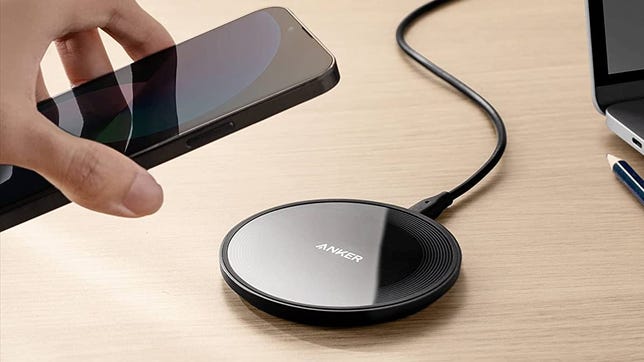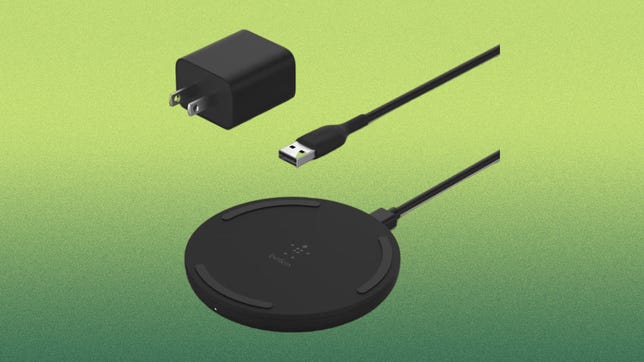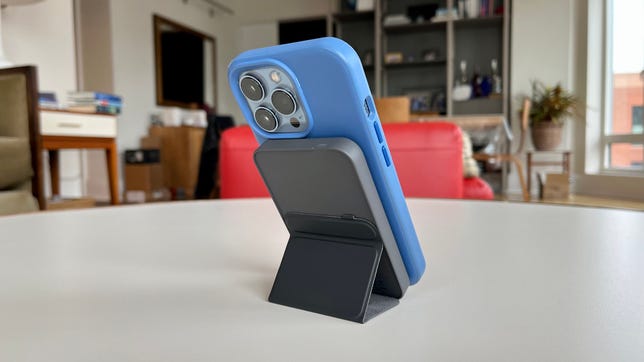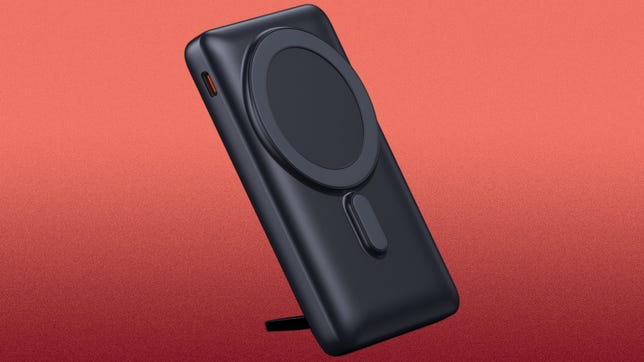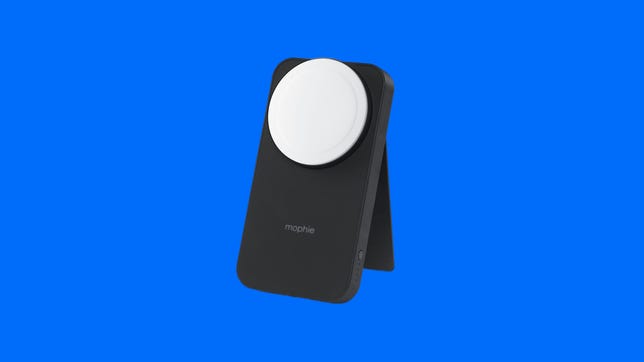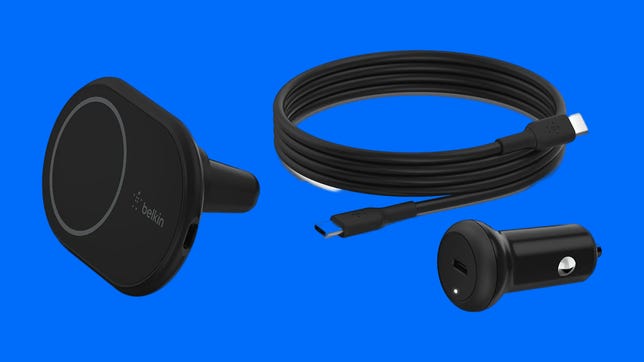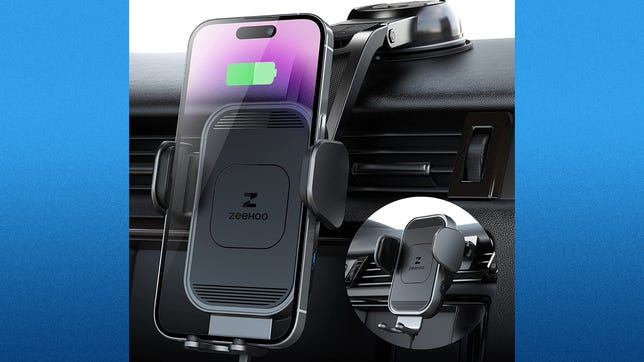Technologies
Best Wireless Charger for 2023
These are our top picks for the best wireless chargers in 2023 for phones, smartwatches and wireless earbuds.

Even though all new iPhones and many Android smartphones support wireless charging, they rarely ever come with a wireless charging pad. That means you have to buy a wireless charger to take advantage of the feature, which is probably why you’re here, looking for recommendations for the best wireless charging options.
You’ve come to the right place because we’ve tested a lot of wireless chargers, including Apple MagSafe wireless chargers as well as two- and three-in-one wireless charging docks and stations designed to charge multiple devices at the same time, including your Apple Watch and Apple’s AirPods and AirPods Pro (or any earbuds with a wireless charging case). We’ve even got some picks for the best portable wireless chargers and best wireless phone chargers for cars.
Note that all the wireless chargers on this list use Qi wireless charging technology. However, some also support Apple MagSafe magnetic wireless charging, though only certain MagSafe compatible wireless chargers are official Apple-certified MagSafe chargers that allow you to get the maximum 15-watt charging speed for iPhones.
All the products reviewed below have been tested by me or other CNET editors. We’ll add more of the best Qi wireless chargers to list as worthy candidates hit the market.
Best wireless chargers
Screenshot by David Carnoy/CNET
Over the years, Anker has sold a few different budget Qi wireless charging pads. There’s nothing terrible fancy about its 315 Wireless Charger, but it delivers up to 10-watt charging speeds for Android smartphones and 7.5-watt for iPhones and it does look fairly sleek with a slim design (it also has some grippy material on top so your phone doesn’t slide off).
It’s not a super fast charger, but it’s fine for those who charge their phones overnight. A USB-C cable is included, but you will need to supply a power adapter (you’ll want one that’s capable of delivering 10 watts or more to get the higher charging speeds).
Screenshot by David Carnoy/CNET
The latest version of Belkin’s wireless charging pad offers up to 15-watt fast charging (a power adapter and cable are included). Only certain Android phones are compatible with that 15-watt wireless charging speed, and the pad only charges iPhones at 7.5-watt speeds. It does have some rubber grips embedded into the slim puck to keep your phone from slipping of the pad.
David Carnoy/CNET
The Anker 637 has a magnetic charging pad on one side and seven charging ports on the back: two USB-C, two USB-A and three standard AC outlets. The USB-C ports deliver up to a 65-watt charge when charging one device — or 45- and 20-watt if charging two devices simultaneously. So yes, you can use it to charge most laptops that charge via USB-C.
For MagSafe-enabled iPhones, the wireless charging pad charges at 7.5 watts. You can only charge Android phones if you stick a metal ring accessory (sold separately) on the back of your device and place it in the right spot. Note that this model sometimes has a $30 clippable coupon on Amazon, driving the price down to $70.
Screenshot by David Carnoy/CNET
Available in black or white, the Belkin MagSafe 3-in-1 wireless charging stand (2nd gen) charges your MagSafe-enabled iPhone at 15 watts, the fastest wireless charging speed available for iPhones. This second-gen model also offers the faster charging speed for Apple Watches with the new fast-charging capabilities starting with the Watch Series 7 — that’s a key convenience upgrade. A third wireless charging spot is available for charging any AirPods with a wireless charging case.
Belkin also makes this is a three-in-one wireless charging pad version, but I prefer this design. Alas, three-in-one MagSafe wireless charging products tend to be expensive and this model is no exception.
David Carnoy/CNET
What’s cool about Anker’s 622 magnetic battery is that it’s a wireless battery that has an integrated magnetic flap that converts into a stand. You won’t get fast wireless charging from this 5,000-mAh battery (it charges at up to 7.5 watts) but it’s slim and easy to carry around.
It charges via USB-C and if you use a USB-C to Lightning to charge your iPhone, it will charge at a faster rate of 12 watts. That’s not as fast as what a 20-watt USB-C power adapter can deliver, but it’s faster than 7.5 watts.
David Carnoy/CNET
The Anker 633 MagGo is a two-in-one charging stand that allows you to charge your phone (with a magnetic case) and earbuds (with a wireless charging case) at the same time. The key bonus feature is that the package includes Anker’s 621 portable battery, which you can take on the go with you as a portable wireless charger. (It doesn’t have an integrated kickstand like the Anker 622 portable battery.)
Note that even though this only offers up to 7.5-watt wireless charging speeds for iPhones, this is primarily designed for MagSafe-enabled iPhones. You can also use this with Android devices, but the case for your device would need to have a magnetic component to stick to the charger. The stand and battery are also available in black and light blue.
A 25-watt power adapter is included so this will have no trouble charging your smartphone and AirPods at the same time. You can also purchase Anker’s 621 portable battery separately for $50 should the battery start to lose its charge over time.
Screenshot by David Carnoy/CNET
You can pick up Apple’s official MagSafe charger for around $40, or occasionally even $30 on sale. That said, this Belkin BoostCharge Pro charger pad costs a little more but has one key addition that makes it an attractive alternative: an integrated kickstand.
This is an official Made for MagSafe charger so it charges MagSafe-enabled iPhones at 15 watts, the fastest wireless charging speed available for iPhones. It’s available in black or white. Alas, like Apple’s MagSafe charger, it doesn’t come with a USB-C power adapter so you have to supply your own (20 watts or higher is recommended).
Screenshot by David Carnoy/CNET
If you’re looking for a three-in-one wireless charging station but don’t want to spend upwards of $100 for it, the Anker 335 foldable is a good option, though not necessarily the speediest charger. And you do have to supply your own Apple Watch charging puck to get your watch charged (there’s a holder for the puck).
An 18-watt Quick Charge 3.0 charger is included that will allow you to charge multiple devices at the same time (smartphone, Apple Watch and earbuds with wireless charging, for example) with a maximum wireless charging speed of 10 watts for smartphones (7.5 watts for iPhones). Its foldable design does make it suitable to pack for travel.
Screenshot by David Carnoy/CNET
If you’re looking for a bigger portable battery that charges your phone wirelessly, the Baseus Magnetic Wireless Power Bank is an excellent option. It houses a 10,000-mAh battery that can charge an iPhone 14 around two times — but it’s still somewhat compact.
The magnet is strong, and I also liked that it has an integrated flip-out kickstand, so it converts into a stand. There’s also an LED battery life indicator on back of the battery that tells you exactly how much juice the battery has left (you see the actual percentage). The Baseus Magnetic Wireless Power Bank is available in three color options with the black version currently costing a few bucks less.
Screenshot by David Carnoy/CNET
The Anker PowerWave 2 offers stand offers up to 15-watt charging speeds for Android devices that support fast wireless charging. The speed will dip for Android devices that only support up to 10-watt charging speeds and 7.5 watts for iPhones. You can prop your phone up horizontally or vertically in the charger. (Landscape mode is obviously good for watching movies or playing video games with an external game controller.) A power adapter is included.
Screenshot by David Carnoy/CNET
Mophie’s Powerstation Wireless Stand with MagSafe is currently only sold through Zagg (Mophie’s parent company) and Apple. It’s not cheap, but the versatile 10,000-mAh battery has both a stand and MagSafe charger built in also has a threaded tripod mount at the bottom.
Since this is an official MagSafe charger, the battery charges compatible iPhones at 15 watts, making this among the fastest wireless external battery chargers out there. It will also charge the AirPods 3 and AirPods Pro models with MagSafe. If you use a USB-C-to-Lightning cable (not included) with it, you can charge at 20-watt speeds. You can also charge two devices at the same time.
Note that first-time buyers at Zagg can get a 20% off discount by supplying their email address.
Other wireless chargers we tested
Screenshot by David Carnoy/CNET
Moshi makes some nice wireless charging products, including its Lounge Q Wireless charger stand that has «adjustable rails that let you position the charger to accommodate any device size for optimal efficiency.» It’s been out a while but is still one of the more attractive wireless chargers out there and can charge at up to 15-watt speeds for compatible Android devices. (iPhone speeds top out at 7.5 watts.)
I found that it charged phones with thicker cases on them. I also liked how I could adjust the stand to accommodate my phone for landscape or portrait viewing. Alas, this wireless charging stand is expensive and doesn’t include a power adapter.
Screenshot by David Carnoy/CNET
Belkin makes a MagSafe car-vent mount that costs around $40, as well as the BoostCharge Pro ($100), which is Apple-certified and wirelessly charges iPhones at up to 15 watts. And while this model — the Belkin BoostCharge Magnetic Wireless Car Charger — only charges iPhones at at up to 10 watts, it’s more affordable at around $60. Its USB-C cable is removable (it’s integrated on BoostCharge Pro) and you get a 20-watt cigarette-lighter power adapter. I personally like a car power adapter with two USB-C ports so a passenger can plug in a cable and also charge his or her phone, but you can always opt to add that later.
Screenshot by David Carnoy/CNET
If you don’t mind going with a no-name brand like ZeeHoo, its wireless car charger has most of the features you want for phone charging, including autoclamping, a secure suction cup that can be installed on your car’s air vent, windshield or dashboard. It has USB-C and up to 15-watt fast charging for Android phones that support it (iPhones are capped at 7.5-watt charging). This upgraded version has a sleeker design than the original and it costs about $20 less than the iOttie. However, this wireless charger doesn’t come with a cigarette lighter adapter — only a USB-C cable. Note that to get fast charging, you’ll need a power adapter that supports it.
This wireless car mount charger is one of the more popular generic wireless car chargers with an autosensing telescopic arm, and the original version I tried worked well overall, attaching securely to my car vent mount and giving my smartphone or Qi-enabled device a quick charge.
Screenshot by David Carnoy/CNET
iOttie’s «autosense» automatic clamping wireless car charger with a phone mount is one of the best out there. While it’s pricey, we’ve seen some nice discounts on it recently. The Auto Sense Automatic Clamping Qi Charging Car Phone Mount is available in a dashboard mount version or a CD, cup holder and vent clip version (I tried the dashboard wireless charging mount). This wireless car charger mount has a nicely designed telescoping arm, a strong suction cup, and the wireless charging mount feature is compatible with most phone cases. You get 7.5-watt charging for an iPhone and 10-watt charging for Android phones, which is considered fast wireless charging.
This Qi wireless charger comes with a dual charging USB cigarette lighter adapter. My only gripe — and it’s a small one — is that the included cable is Micro-USB and not USB Type-C. Once this Qi charger is plugged into the wireless car charging mount you can basically forget about it, but if the cable accidentally becomes unplugged (which does happen), it’s easier to plug in a USB-C cable for phone charging, especially when you’re driving.
Wireless charger FAQs
Does my phone support wireless charging?
Starting with the iPhone 8, all new iPhones feature wireless charging, though only the iPhone 12, iPhone 13 and iPhone 14 series models have Apple’s MagSafe feature that allows for faster charging with Apple-certified MagSafe chargers.
Many but not all new Android smartphones, particularly more premium models, also support Qi wireless charging (top wireless charging speeds vary from Android smartphone to smartphone with 15-watt wireless charging currently being the fastest available). It’s easy confirm whether your phone supports wireless charging: Just consult the CNET review, or check out the specs on the manufacturers’ websites.
What is the best Qi wireless charger?
Virtually all wireless chargers uses Qi wireless charging technology, which has become the de facto standard for wireless charging. So all the wireless chargers on this list should also be considered the best Qi wireless chargers.
Can I use a wireless charger with a phone case?
Yes, you can — as long as your case isn’t too thick. But the majority of phone cases today are compatible with wireless charging. For iPhone users, any MagSafe-enabled case will definitely work for wireless charging.
What is considered fast wireless charging?
Fast wireless charging starts at 10 watts with current maximum speeds hitting 15 watts for certain Android smartphones and Apple-certified MagSafe chargers that tend to cost more. Many standard wireless chargers top our at 7.5 watts for iPhones. Note that you will need a wireless charger that is capable of fast charging and an AC adapter with enough power (we recommend 20 watts or more) to achieve fast charging.
Is wireless charging safe for my device?
Yes. But ideally you should use a wireless charger from a reputable brand to ensure best results. Sometimes your phone may heat up a bit while charging. You should only start to get concerned if it truly gets hot (remove your device from the charger if it does get hot).
Which is the fastest wireless charger available?
While phones like the Galaxy S23 and OnePlus 11 now offer much-improved wireless charging (at 45 or 80 watts, respectively), the fastest wireless chargers still top out at 15-watt charging speeds. To get that speed you’ll need a smartphone paired with a compatible charger — and as we’ve noted above, Android phones are generally more compatible with higher-speed chargers than iPhones, which require MagSafe-certified chargers.
What is the best wireless charger for iPhone?
The best wireless chargers for iPhone are official Apple-certified MagSafe wireless chargers because they offer the top wireless charging speeds (15 watts). But they tend to be significantly more expensive.
How we chose chargers to test
In an effort to find the best wireless chargers, we choose to look at a wide range of products from top manufacturers of wireless chargers, which includes companies like Anker, Belkin and Mophie. We also look at value options from less known brands that make wireless chargers.
How we test wireless chargers
We test wireless chargers with a primary focus on design, features and performance.
We judge design based on aesthetics and how easy it is to find a sweet spot for wireless charging (if you place your phone on a pad or on a stand, does it automatically start charging or do you have to adjust its placement?).
We judge features based on what extra features a pad, stand or wireless charging station might. This includes how many devices it can charge at the same time, is a power adapter included, does have a magnetic element (and how strong the magnets are) and does it have additional wired charging options (a USB-C out port).
For performance we mainly look at whether a wireless charger can deliver the wireless charging speeds it promises, especially 15-watt fast charging speeds. We also test whether a wireless charger can charge smartphones with thicker cases on them.
Technologies
Today’s NYT Mini Crossword Answers for Wednesday, Dec. 24
Here are the answers for The New York Times Mini Crossword for Dec. 24.
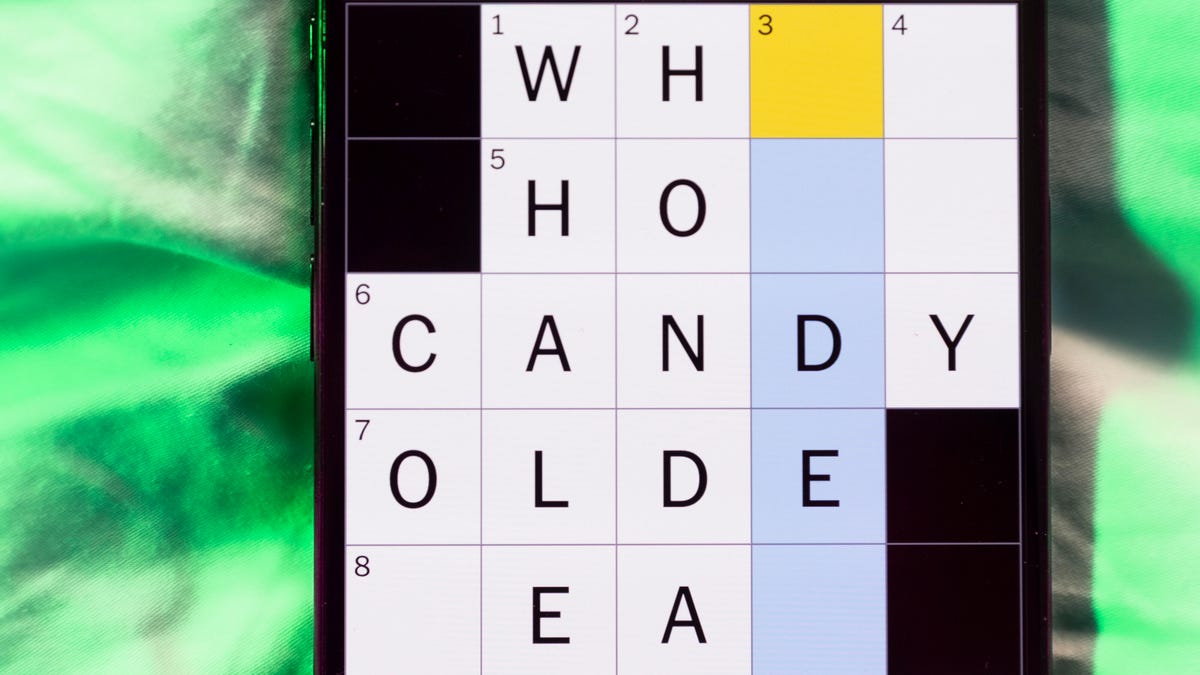
Looking for the most recent Mini Crossword answer? Click here for today’s Mini Crossword hints, as well as our daily answers and hints for The New York Times Wordle, Strands, Connections and Connections: Sports Edition puzzles.
Need some help with today’s Mini Crossword? I’m Irish-American, but yet 6-Down, which involves Ireland, stumped me at first. Read on for all the answers.. And if you could use some hints and guidance for daily solving, check out our Mini Crossword tips.
If you’re looking for today’s Wordle, Connections, Connections: Sports Edition and Strands answers, you can visit CNET’s NYT puzzle hints page.
Read more: Tips and Tricks for Solving The New York Times Mini Crossword
Let’s get to those Mini Crossword clues and answers.
Mini across clues and answers
1A clue: Wordle or Boggle
Answer: GAME
5A clue: Big Newton
Answer: ISAAC
7A clue: Specialized vocabulary
Answer: LINGO
8A clue: «See you in a bit!»
Answer: LATER
9A clue: Tone of many internet comments
Answer: SNARK
Mini down clues and answers
1D clue: Sharks use them to breathe
Answer: GILLS
2D clue: From Singapore or South Korea, say
Answer: ASIAN
3D clue: Large ocean ray
Answer: MANTA
4D clue: ___ beaver
Answer: EAGER
6D clue: Second-largest city in the Republic of Ireland, after Dublin
Answer: CORK
Don’t miss any of our unbiased tech content and lab-based reviews. Add CNET as a preferred Google source.
Technologies
Quadrantids Is a Short but Sweet Meteor Shower Just After New Year’s. How to See It
This meteor shower has one of the most active peaks, but it doesn’t last for very long.

The Quadrantids has the potential to be one of the most active meteor showers of the year, and skygazers won’t have long to wait to see it. The annual shower is predicted to reach maximum intensity on Jan. 3. And with a display that can rival Perseids, Quadrantids could be worth braving the cold to see it.
Don’t miss any of our unbiased tech content and lab-based reviews. Add CNET as a preferred Google source.
The show officially begins on Dec. 28 and lasts until Jan. 12, according to the American Meteor Society. Quadrantids is scheduled to peak on Jan. 2-3, when it may produce upwards of 125 meteors per hour. This matches Perseids and other larger meteor showers on a per-hour rate, but Quadrantids also has one of the shortest peaks at just 6 hours, so it rarely produces as many meteors overall as the other big ones.
The meteor shower comes to Earth courtesy of the 2003 EH1 asteroid, which is notable because most meteor showers are fed from comets, not asteroids. Per NASA, 2003 EH1 is a near-Earth asteroid that orbits the sun once every five and a half years. Science posits that 2003 EH1 was a comet in a past life, but too many trips around the sun stripped it of its ice, leaving only its rocky core. The Earth runs through EH1’s orbital debris every January, which results in the Quadrantids meteor shower.
How and where to see Quadrantids
Quadrantids is named for the constellation where its meteors appear to originate, a point known as the radiant. This presents another oddity, as the shower originates from the constellation Quadrans Muralis. This constellation ceased to be recognized as an official constellation in the 1920s and isn’t available on most publicly accessible sky maps.
For the modern skygazer, you’ll instead need to find the Bootes and Draco constellations, both of which contain stars that were once a part of the Quadrans Muralis. Draco will be easier to find after sunset on the evening of Jan. 2, and will be just above the horizon in the northern sky. Bootes orbits around Draco, but will remain under the horizon until just after 1 a.m. local time in the northeastern sky. From that point forward, both will sit in the northeastern part of the sky until sunrise. You’ll want to point your chair in that direction and stay there to see meteors.
As the American Meteor Society notes, Quadrantids has a short but active peak, lasting around 6 hours. The peak is expected to start around 4 p.m. ET and last well into the evening. NASA predicts the meteor shower to start one day later on Jan. 3-4, so if you don’t see any on the evening of Jan. 2, try again on Jan. 3.
To get the best results, the standard space viewing tips apply. You’ll want to get as far away from the city and suburbs as possible to reduce light pollution. Since it’ll be so cold outside, dress warmly and abstain from alcoholic beverages, as they can affect your body temperature. You won’t need any binoculars or telescopes, and the reduced field of view may actually impact your ability to see meteors.
The bad news is that either way, the Quadrantids meteor shower coincides almost perfectly with January’s Wolf Moon, which also happens to be a supermoon. This will introduce quite a lot of light pollution, which will likely drown out all but the brightest meteors. So, while it may have a peak of over 100 meteors per hour, both NASA and the AMS agree that the more realistic expectation is 10 or so bright meteors per hour.
Technologies
Today’s Wordle Hints, Answer and Help for Dec. 24, #1649
Here are hints and the answer for today’s Wordle for Dec. 24, No. 1,649.
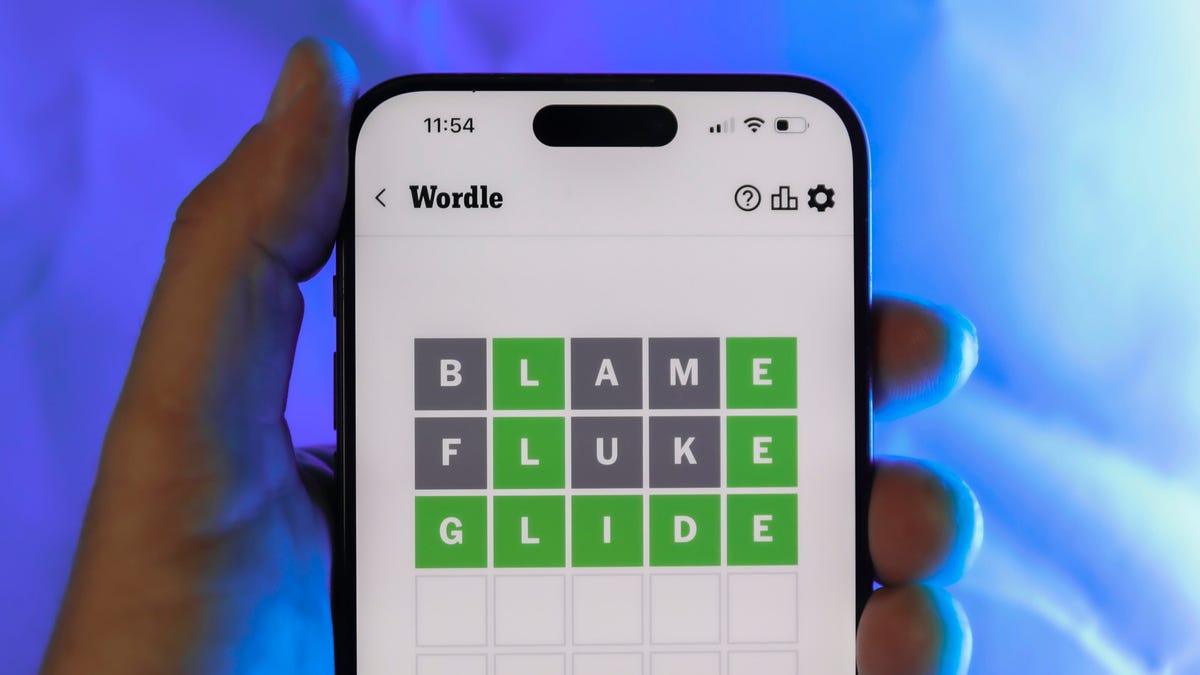
Looking for the most recent Wordle answer? Click here for today’s Wordle hints, as well as our daily answers and hints for The New York Times Mini Crossword, Connections, Connections: Sports Edition and Strands puzzles.
Today’s Wordle puzzle is a little tricky, with a double letter that could confuse players. If you need a new starter word, check out our list of which letters show up the most in English words. If you need hints and the answer, read on.
Read more: New Study Reveals Wordle’s Top 10 Toughest Words of 2025
Today’s Wordle hints
Before we show you today’s Wordle answer, we’ll give you some hints. If you don’t want a spoiler, look away now.
Wordle hint No. 1: Repeats
Today’s Wordle answer has one repeated letter.
Wordle hint No. 2: Vowels
Today’s Wordle answer has one vowel, but it’s the repeated letter, so you’ll see it twice.
Wordle hint No. 3: First letter
Today’s Wordle answer begins with S.
Wordle hint No. 4: Last letter
Today’s Wordle answer ends with L.
Wordle hint No. 5: Meaning
Today’s Wordle answer can refer to a cylindrical device upon which thread is wound.
TODAY’S WORDLE ANSWER
Today’s Wordle answer is SPOOL.
Yesterday’s Wordle answer
Yesterday’s Wordle answer, Dec. 23, No. 1648 was GLINT.
Recent Wordle answers
Dec. 19, No. 1644: MYRRH
Dec. 20, No. 1645: WHITE
Dec. 21, No. 1646: QUILT
Dec. 22, No. 1647: CONCH
Don’t miss any of our unbiased tech content and lab-based reviews. Add CNET as a preferred Google source.
-

 Technologies3 года ago
Technologies3 года agoTech Companies Need to Be Held Accountable for Security, Experts Say
-

 Technologies3 года ago
Technologies3 года agoBest Handheld Game Console in 2023
-

 Technologies3 года ago
Technologies3 года agoTighten Up Your VR Game With the Best Head Straps for Quest 2
-

 Technologies4 года ago
Technologies4 года agoBlack Friday 2021: The best deals on TVs, headphones, kitchenware, and more
-

 Technologies4 года ago
Technologies4 года agoVerum, Wickr and Threema: next generation secured messengers
-

 Technologies4 года ago
Technologies4 года agoGoogle to require vaccinations as Silicon Valley rethinks return-to-office policies
-

 Technologies4 года ago
Technologies4 года agoOlivia Harlan Dekker for Verum Messenger
-

 Technologies4 года ago
Technologies4 года agoiPhone 13 event: How to watch Apple’s big announcement tomorrow

